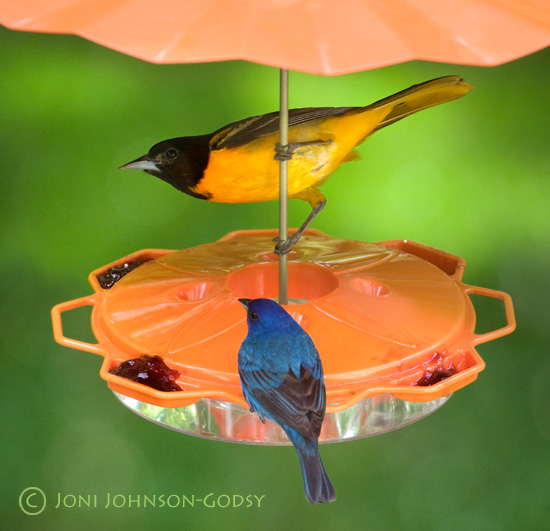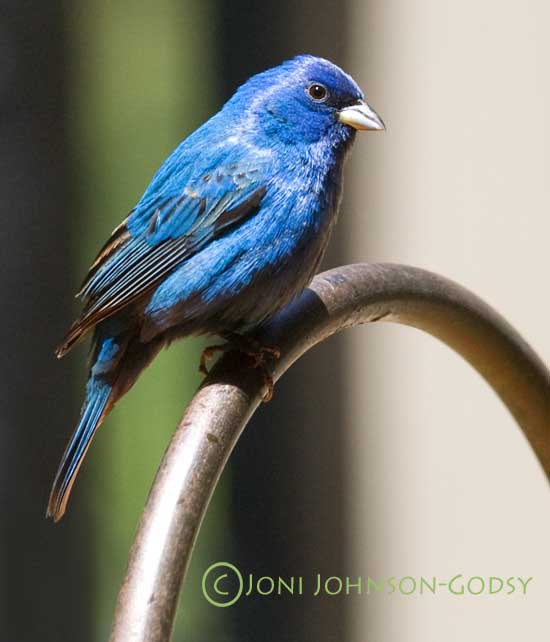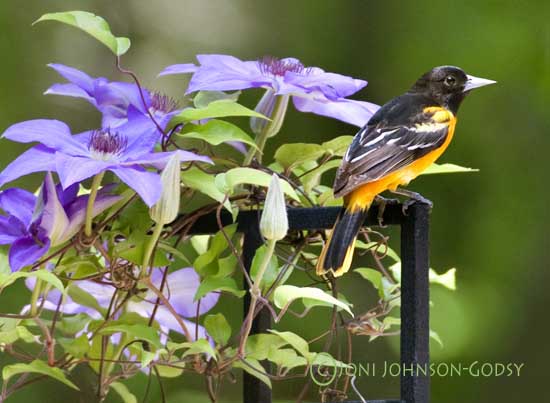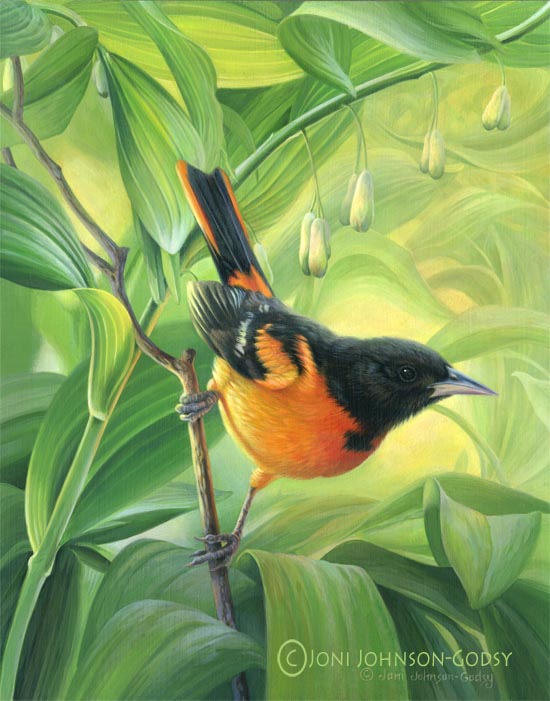I adore birds. All birds. There is something about them that simply fascinates me. My mother instilled this love in me from early childhood. Although not at all outdoorsy, my mom did enjoy watching the birds in our back yard from the glass sun room (no BUGS!). We had a Peterson field guide on the table in that room accompanied by binoculars . Although the birds we saw mostly were common back yard birds found in the eastern U.S. we enjoyed watching them just the same.
When I moved from Ohio to the Kansas City area, the birds that I saw each day were many of the same species that I watched while growing up. Once we moved to wooded acreage however, bird watching took on a whole new dimension! Many of the familiar birds are here in the woods (although I have not seen a single Sparrow since our arrival here). But we are now able to attract colorful canopy birds too, my two favorites of which are sharing a feeder below.
(Below) A mature Baltimore Oriole shares “his” jelly feeder with a male Indigo Bunting. Size is everything in the bird world…usually. Ordinarily, a larger bird would nearly always dominate a feeder. But Buntings are very laid back and tame by nature. They are birds of little conflict that are amiable and seemingly unflappable. This tiny fellow was not deterred by the larger more flamboyant Oriole. They were somehow able to work out an agreement with each other and dined together. This is unusual, as birds of different species typically don’t eat at a feeder at the same time.

Like any busy airport, one must occasionally wait in line to get onto the tarmac. Here the Bunting is trying to decide whether or not to hop down onto the jelly feeder. Buntings are very adaptable birds, getting along well with others and eating virtually anything that is available to them from small insects, to jelly, to small seeds. This is a delightful and beautiful species.

We are nearly overrun by Orioles this year. Adult males are the only ones that have a solid black head. Juvenile males are speckled where they will later be black. This mature male poses within the Clematis on our trellis. The purple and orange are a beautiful sight.

My acrylic painting entitled “Vibrant Garden” was inspired by sights just outside our windows.

